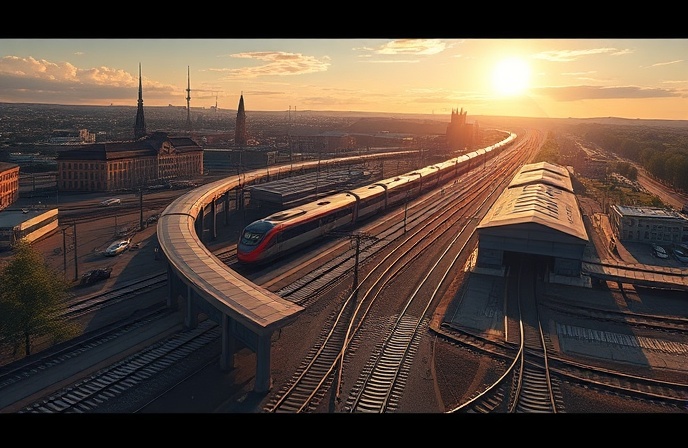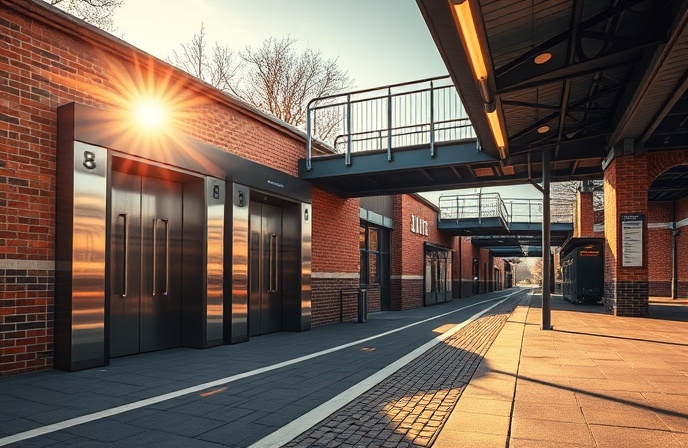Optimizing Global Rail Infrastructure: Safety & Efficiency Trends
Optimize railway infrastructure for peak efficiency and safety. Advanced track maintenance and signaling systems are revolutionizing rail travel. Discover how!

Optimizing Railway Infrastructure for Enhanced Efficiency and Safety
The global rail industry is undergoing a period of significant transformation, driven by the need for increased efficiency, safety, and sustainability. This article explores crucial aspects of optimizing railway infrastructure, examining the key technological advancements and strategic approaches shaping the future of rail travel. From innovative track maintenance techniques to the integration of advanced signaling systems, the discussion delves into the practical implications of these improvements for both passenger and freight transport. The emphasis is placed on identifying the critical links between infrastructure enhancements and improved operational performance, ultimately aiming to enhance the overall safety and efficiency of rail networks worldwide. Modernizing railway infrastructure requires a holistic approach, considering factors like capacity expansion, environmental impact reduction, and incorporating cutting-edge technologies that foster robust and reliable systems. This comprehensive assessment serves as a valuable guide for industry stakeholders, policymakers, and researchers, providing valuable insights into the challenges and opportunities in the pursuit of an optimized rail network.
Track Maintenance and Renewal Strategies
Modern track maintenance strategies go beyond simply repairing damaged sections. Predictive maintenance techniques, leveraging data analytics and sensor technology, play a critical role in anticipating potential issues before they escalate into major disruptions. This proactive approach minimizes downtime and enhances safety by enabling timely interventions. The implementation of advanced track geometry measurement tools, alongside the use of robotic systems for track inspection and maintenance, are contributing to greater efficiency and cost-effectiveness. These technologies, often integrated with sophisticated management information systems (MIS), significantly improve the accuracy and speed of track assessment, enabling more effective preventative maintenance programs, minimizing the likelihood of accidents, and maximizing the lifespan of the infrastructure.
Advanced Signaling and Communication Systems
The adoption of advanced signaling systems, including CBTC (Communication-Based Train Control), is transforming railway operations. These systems offer a significant improvement in safety by enabling more precise train control and quicker response times to unforeseen circumstances. Improved communication pathways between trains and the control center, as well as between different railway sectors, are vital components of this evolution. By increasing the speed and reliability of communication, these advanced technologies reduce the potential for collisions and enhance the overall operational efficiency of the system. The integration of these technologies necessitates robust cybersecurity protocols to maintain the integrity of the system and protect against potential disruptions.
Electrification and Sustainable Practices
The transition to electrified railway systems is gaining momentum, driven by environmental concerns and the need for more sustainable transport solutions. This shift involves careful planning and execution, considering factors such as grid stability, power distribution networks, and the optimization of power usage. The incorporation of renewable energy sources, like solar and wind, in powering railway systems is crucial for reducing the carbon footprint of rail operations. This necessitates significant investment in infrastructure upgrades and the development of specialized technologies to effectively integrate these renewable sources into the existing grid. Integrating these technologies not only enhances sustainability but also contributes to the overall cost-effectiveness and resilience of the railway system.
The Role of the Alstom Rail Academy in Shaping the Future
The Alstom Rail Academy, recognized for its expertise in rail engineering and technology, plays a critical role in fostering the next generation of railway professionals. Its initiatives in training and development empower individuals with the knowledge and skills needed to operate and maintain state-of-the-art railway systems. By providing practical, hands-on learning opportunities, the academy is instrumental in accelerating the adoption and successful implementation of advanced technologies across the rail industry. The insights developed at such academies directly impact the efficient maintenance and operation of railway networks.
Conclusions:
This article has highlighted the crucial elements in optimizing railway infrastructure for enhanced efficiency and safety. The integration of predictive maintenance, advanced signaling systems, electrification, and the crucial role of specialized training institutions like the Alstom Rail Academy are all key to a modern, sustainable, and effective rail network. Improved track maintenance reduces disruptions and extends the lifespan of critical infrastructure, leading to significant cost savings and improved safety. Proactive maintenance, enabled by advanced technologies, minimizes the likelihood of accidents. Sophisticated signaling systems, such as CBTC, provide precise train control and quicker response times to emergencies, greatly enhancing safety. The transition to electrified systems, coupled with sustainable energy sources, reduces the carbon footprint and improves the environmental impact. The importance of training institutions, such as the Alstom Rail Academy, cannot be overstated. They empower professionals with the cutting-edge knowledge and skills to handle the complexities of modern railway systems. The overall result is a more robust, efficient, and safe rail system that supports economic growth and promotes environmental responsibility. These advancements underscore the industry’s commitment to innovation, efficiency, and safety, laying the groundwork for a future where rail travel is a seamless, sustainable, and increasingly attractive option for global commuters and freight transport.
You might be interested in:



